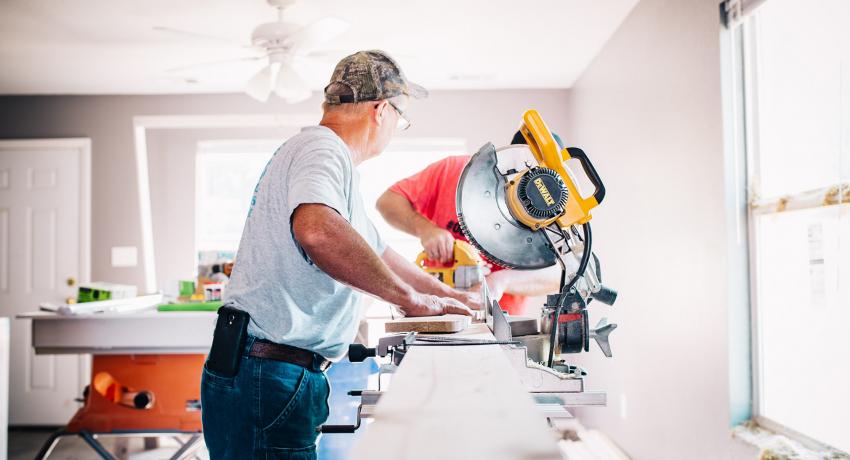
How to Choose the Right Homeowners Insurance
Choosing the right insurance policy is an important part of being a responsible homeowner. Homeowners insurance is designed to protect you and your family members from liability. It will also cover your home and possessions in the event of a disaster or theft. If you’re in the process of purchasing your first home, or shopping around for a new insurance provider, you may be confused by the many policy options that are available.
Here’s how to choose the homeowners insurance policy that’s the right fit for you and your home.
What’s the difference between replacement cost and actual cash value?
Before selecting a homeowners insurance plan, you’ll want to make sure you have a good understanding of the difference between replacement cost and actual cash value. It will make all the difference in how much your policy will pay you in the event of a covered loss. Replacement cost is the total amount it would cost to repair or replace a damaged item with something of similar quality. It does not deduct depreciation, which is the decrease in value of an item over time.
For example, something like a roof can lose value over time due to age or use. A 10-year-old roof is not going to be worth the same value as a brand-new roof. Let’s say your 10-year-old roof gets hail damage. With replacement cost, your policy is going to pay you what it would cost for a new roof. Without replacement cost, you would only get paid the value of whatever a 10-year-old roof is worth. This is actual cash value, and in this case, it would be nowhere near enough to replace your damaged roof with a new roof. With actual cash value, you take the replacement cost of the item and subtract the depreciation value at the time of loss. You end up paying the difference from your own pocket when actual cash value doesn’t provide enough to replace the item new. When looking at different homeowners insurance plan options, look carefully at what is covered with replacement cost and what is covered with actual cash value. Some plans have one or the other and some plans have a combination of both.
Homeowners insurance plans
When it comes to homeowners insurance plans, there’s no one-size-fits-all option. Instead, there are many different plans to choose from, and determining which plan best suits your needs can seem overwhelming. There are eight different types of homeowners insurance policies. They vary based on the type of home covered and the type of coverage provided. Here’s a quick look at the most common types of homeowners insurance plans and what they cover.
HO-1: Basic
This is the most basic and limited type of policy that only protects against 10 specified perils. Perils are events that cause loss or damage.
- Fire or lightning
- Hail and windstorms
- Explosions
- Riot or civil commotion
- Damage from aircraft
- Damage from vehicles
- Smoke
- Vandalism or malicious mischief
- Theft
- Falling objects
One main thing that makes an HO-1 policy different than the others is it doesn’t include liability coverage. This means you will not be covered if someone is hurt on your property and you will not be covered for any property damage you cause to other people. This policy only covers the structure of your house in the event of the above-mentioned perils. Both the structure of the home and your personal property are only covered with actual cash value. Some insurance companies don’t even offer an HO-1 policy anymore.
HO-2: Broad
This policy will cover the structure of your home with replacement cost and your personal property with actual cash value. It also includes liability coverage. Liability coverage pays any legal fees or medical expenses if someone is injured on your property.
In addition to the perils covered in an HO-1, an HO-2 also protects against the following perils.
- Volcanic eruption
- Damage caused by weight of ice, snow or sleet
- Accidental discharge or overflow of water or stream from household appliance
- Sudden and accidental tearing apart, cracking, burning or bulging of a built-in appliance like a water heater, air conditioner or sprinkler
- Freezing of household appliance or plumbing, heating, air condition or sprinkler
- Sudden and accidental damage form an artificially generated electrical current, like a power surge
HO-3: Special
This is the most common type of homeowners insurance policy for most single-family homes. It’s a broad policy that covers against all perils with the exception of those specifically excluded in the policy. This policy will cover the structure of your home with replacement cost and your personal property with actual cash value. However, a majority of insurance companies will provide an option to add a replacement cost endorsement to your personal property, at an additional cost. Typically, the additional cost is small. In the event of a major loss like a fire where all your belongings are destroyed, replacement cost may be worth the extra cost of your policy premium if you’re needing to replace all your belongings. Liability coverage is included as well as loss of use. Loss of use covers additional living expenses if you needed to live somewhere else while your home is being repaired from a covered loss.
HO-4: Renters
This policy is designed for renters, not homeowners. It only covers your personal property, not the structure of a house. Personal property is typically covered with replacement cost. It also normally includes liability and loss of use coverage.
HO-5: Comprehensive
The policy comes with a higher premium cost and usually protects newer homes that are in excellent condition. It covers all perils except the few specifically excluded by the policy. Both the structure of the home and personal property are covered with replacement cost automatically. Typically, coverage limits are higher for specific personal property categories like jewelry and electronics.
HO-6: Condo
This policy is designed to cover condominiums or co-ops. It covers personal property, liability and improvements to the owner’s unit.
HO-7: Mobile Home
This reflects similar coverage to an HO-3 policy, but it’s meant to cover mobile homes instead of a single-family home.
HO-8: Modified
Coverage on this policy is similar to an HO-2 policy, but is created specifically for older homes. This policy only covers the structure of the home and your personal property with actual cash value. Liability coverage is included.
Catastrophe coverage
All homeowners insurance policies will cover some catastrophes, but the exact types of disasters included in the plan, and the scope of the coverage, can vary greatly with each policy. In general, most policies will only cover events if they are sudden and accidental. This instantly excludes any structural problems in your home that have likely been building up for months, as well as any damages that you or your family members intentionally do to your home or belongings.
In addition, some natural disasters require a separate policy for coverage. Most policies will cover the more common natural disasters, like windstorms and tornadoes, but won’t offer coverage for earthquakes and floods. If you live in an area that’s prone to a specific natural disaster, your insurance plan will likely include a separate deductible for that specific catastrophe. For example, you may have a separate hurricane deductible in your plan at 1-5% of the property’s insured value. Finally, some kinds of unnatural disasters, such as mold and sewer backups, may not be covered by your policy and will need to be added separately if such coverage is desired.
Premiums and deductibles
Homeowners insurance, like any insurance plan, will offer varying degrees of coverage, with the more costly plans offering more robust coverage. For every plan, you’ll need to pay a monthly, annual or bi-annual premium to your insurance provider. Each plan will also have a deductible, or the sum you’ll need to pay out of pocket when you make a claim. A lower deductible means you’ll pay less out of pocket when you make a claim, but you’ll be paying a higher premium for this privilege. When choosing a plan, look for one with an affordable premium, as well as a deductible you can easily cover with your emergency fund.
Honoring claims
Unfortunately, having a decent homeowner’s insurance plan in no way guarantees coverage for every possible claim situation. Providers only offer coverage when the insured is clearly not at fault. This means your home must be well-maintained for a claim to be honored. Otherwise, your provider may deny a claim on the basis of neglect on your part. Be sure to keep your home in good shape and to tend to all repairs promptly. Clean your gutters annually, have your roof inspected regularly, turn off all outdoor faucets before cold weather sets in each year and keep the trees near your home well-trimmed.
Should I use the insurance company my lender recommends?
A mortgage lender will often suggest an insurance provider to the buyer, but there’s no obligation to use this company. It’s always a good idea to shop around for an insurance provider and to have several quotes to compare before reaching a decision. When making your final decision, be sure to choose a provider that offers sufficient coverage at a premium and deductible you can afford. You may also want to inform your provider about any safety features in your home, like alarm systems, fencing, deadbolts and more. Each safety upgrade may get you a discount on your premiums.
If your home is needing any upgrades to keep it in good condition, we can help. Our Home Equity Line of Credit (HELOC) can help you fund home improvement projects to make sure your home stays updated and eligible for insurance coverage.









